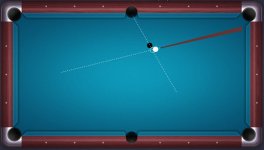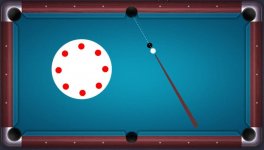Was playing in a tough ring game with some great players the other day. One guy, who 20 or so years ago was considered one of the best players in the tri-state area, was shooting the 9ball. The cb was less than an inch from the 9, a cut shot of about 15°. He made the shot, then said those shots have always been guesswork for him, when the cb is so close to the ob.
I thought that was interesting, this great player who has beat plenty of pros back in his day, saying that he just guesses on those shots. Anybody else guess on these or do you have a good way of ensuring your aim is correct?
I thought that was interesting, this great player who has beat plenty of pros back in his day, saying that he just guesses on those shots. Anybody else guess on these or do you have a good way of ensuring your aim is correct?

